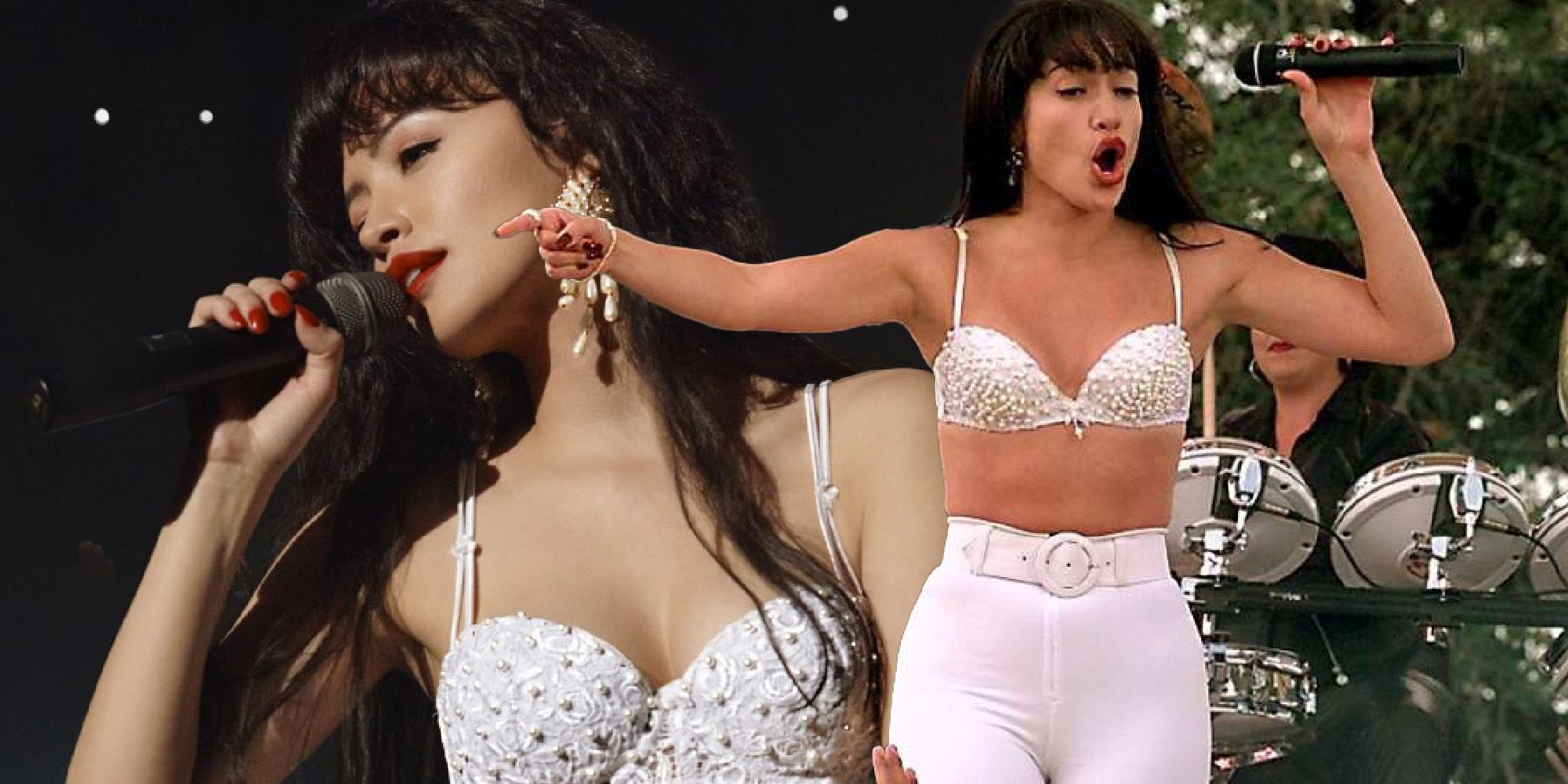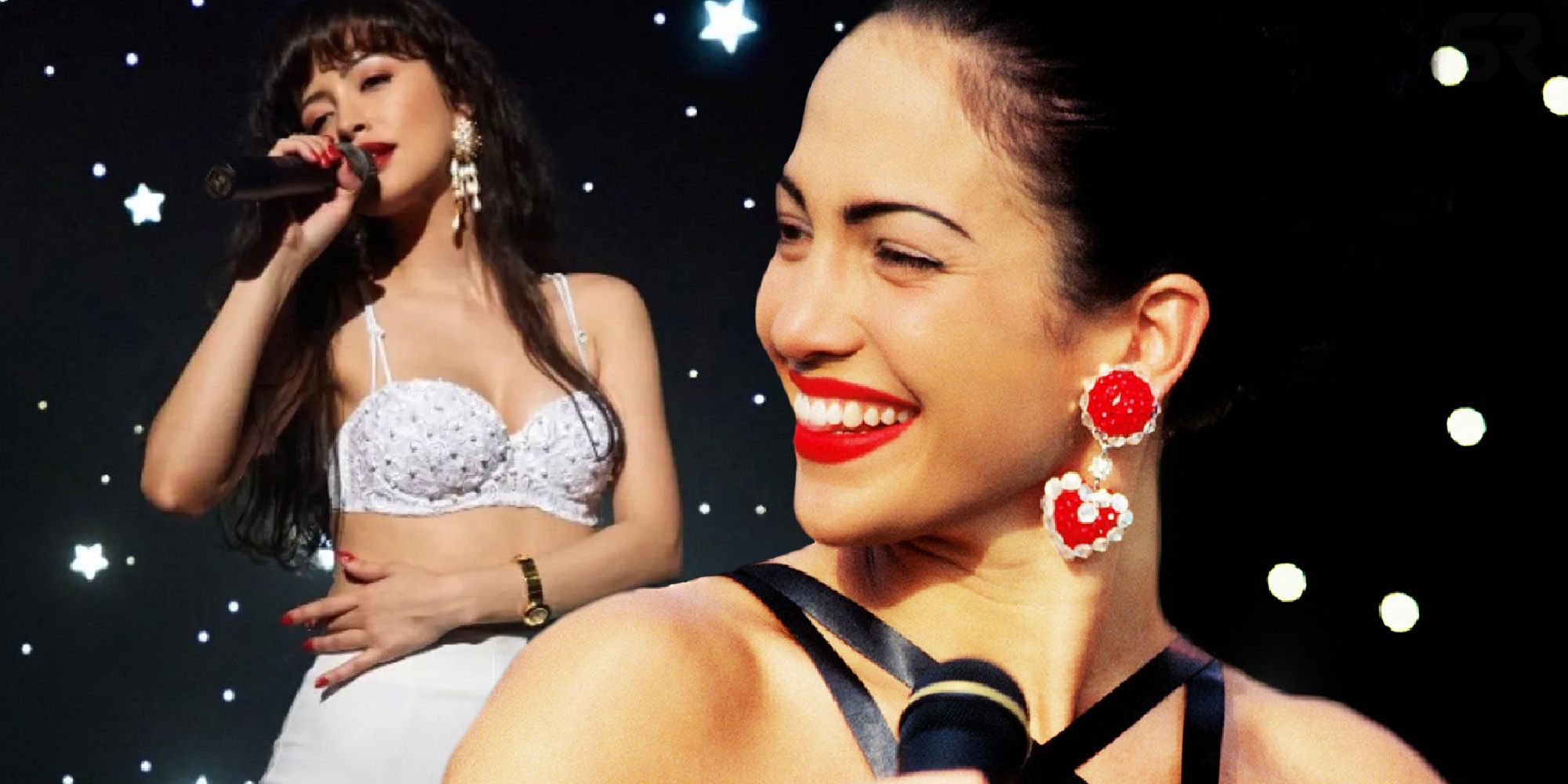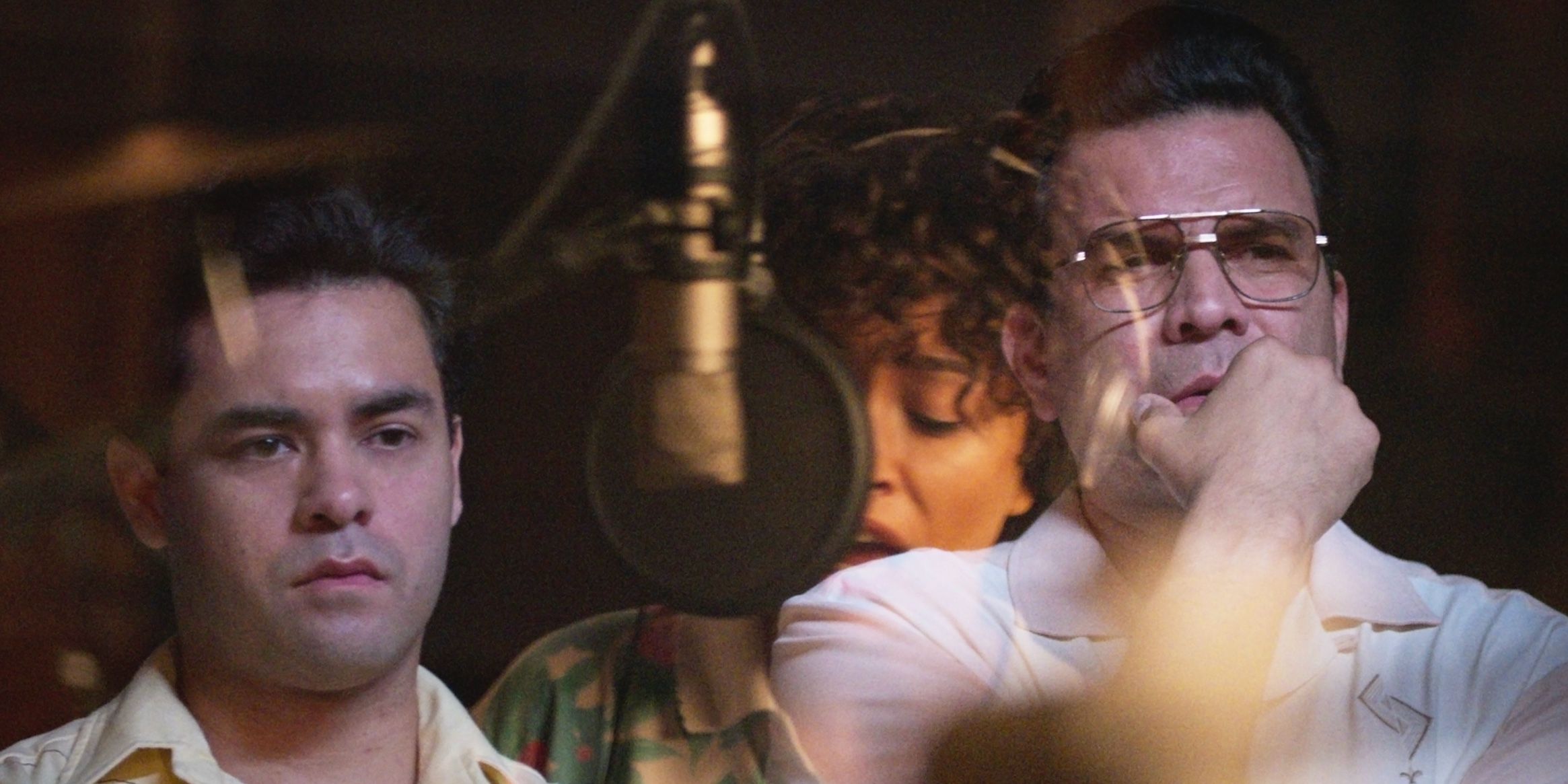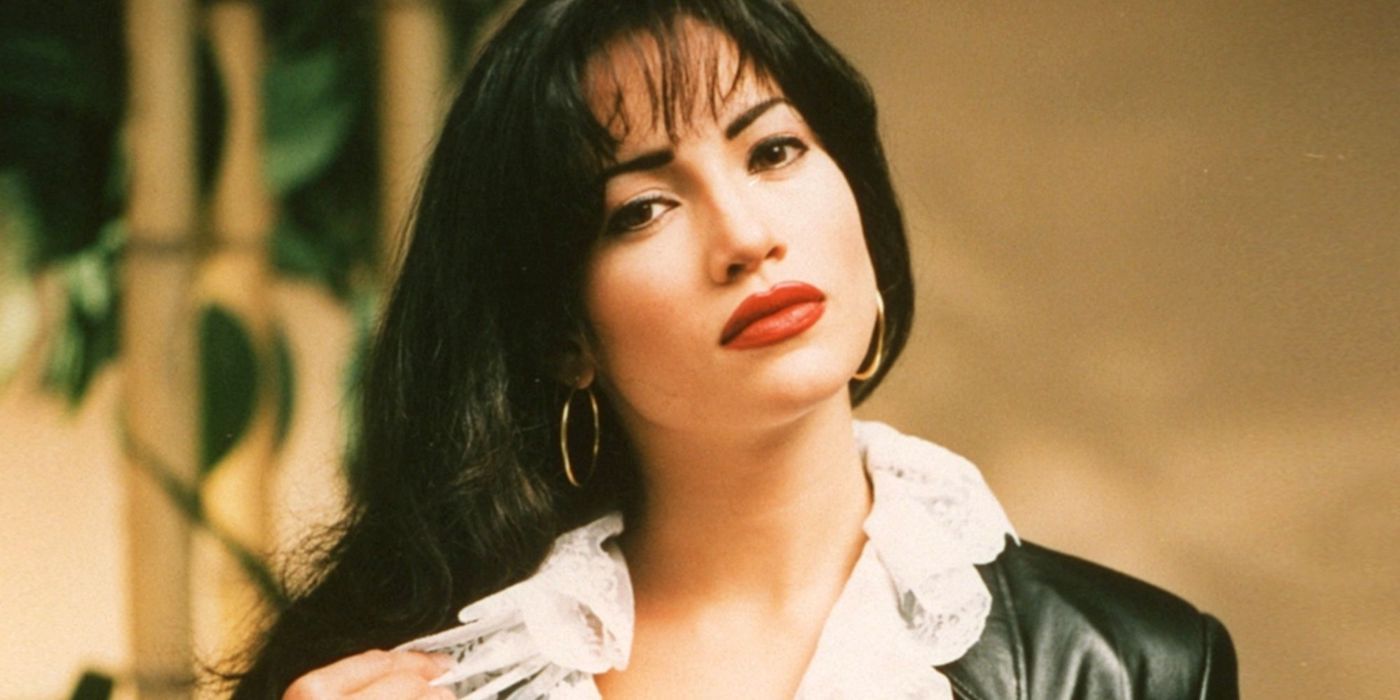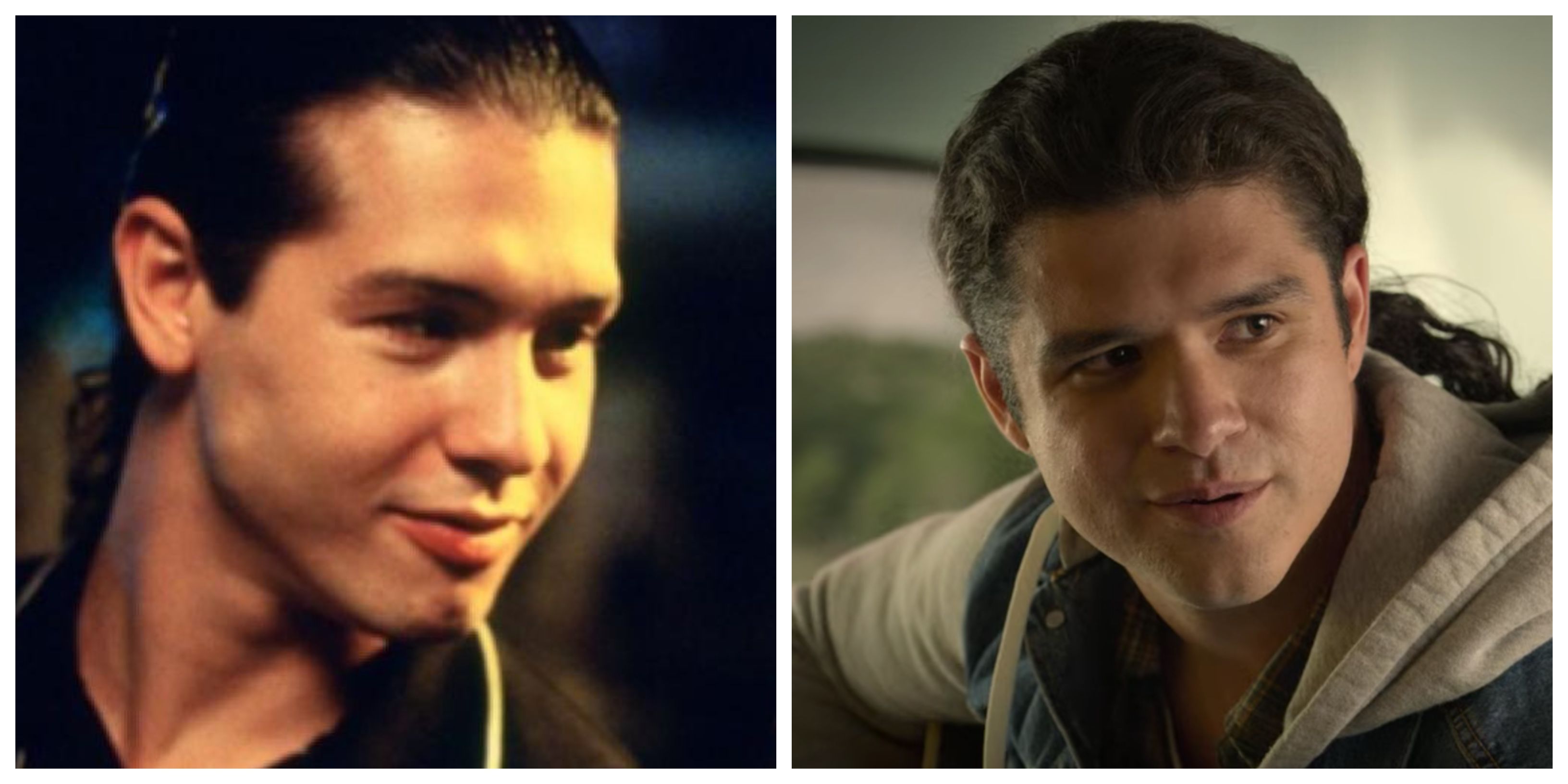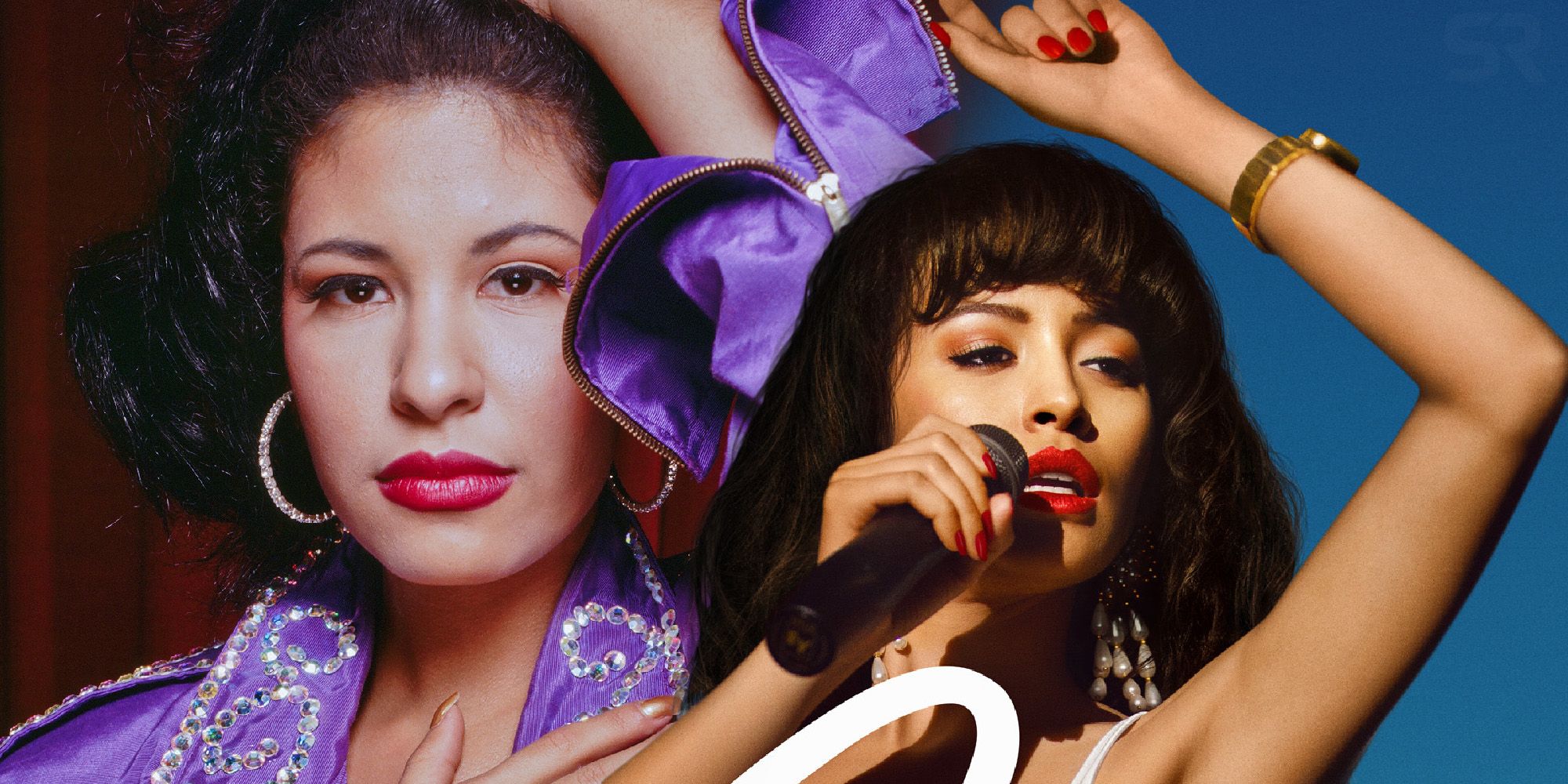How does the 1997 movie Selena compare to Selena: The Series on Netflix? Both production focus on the life and legacy of Selena Quintanilla, a Tejano music superstar who was tragically murdered at age 23 in 1995. Even though the '90s film covers the subject's full life story, there are relevant details left out which are more fully explored in the series.
Selena stars Jennifer Lopez in the title role. She was relatively unknown in pop culture upon being cast in 1996, but eventually transformed into a star after delivering a Golden Globe-nominated performance. Selena: The Series features Christian Serratos, who is best known for portraying Rosita Espinosa in The Walking Dead. Both actresses capture the core personality traits of Selena, however the respective roles call for different creative approaches because of the format differences.
Selena: The Series has received mixed reviews from critics and general streamers, with the major complaint being that it doesn't provide much insight about the subject. However, Netflix trends reveal that people are tuning in to watch. Overall, the series does indeed have plenty to offer in terms of entertainment, yet the narrative has a much different tone than the 1997 film. Here's how Selena compares to Selena: The Series.
The Selena Movie And Series Mostly Tell The Same Origin Story
Selena and Selena: The Series have similar opening structures. The movie begins with the subject's February 26, 1995 performance at the Houston Astrodome, and then goes back in time for an expositional sequence about Selena's father Abraham (Edward James Olmos) and his life experiences in 1961 Corpus Christi. Selena then shifts to a 1981 moment in Lake Jackson, Texas when Abraham learns that young Selena has a strong singing voice. In Selena: The Series on Netflix, the narrative begins with a 1994 Chicago performance sequence before shifting to Lake Jackson scenes in 1971, 1978, and 1981.
The two Selena productions mostly have the same origin story, however the inherent conflict is different. For example, the 1997 movie incorporates a racial element, as a 1961 club owner refuses to book Abraham's Doo-wop group because they're Mexican-Americans and not Italian-Americans. The sequence preps audiences for Abraham's skeptical and stern-headed demeanor as an adult, along with his domineering approach in relation to Selena's career and personal life. In contrast, the Netflix series focuses on Abraham's concerns about young Selena knowing little about Mexican music and not being able to speak Spanish. In general, Selena the movie offers more context about Abraham's life perspective.
The Selena Series Focuses Heavily On A.B. And Abraham Quintanilla
Selena: The Series arguably invests more time in the professional pursuits of Abraham and Selena's brother A.B. (Gabriel Chavarria) than those of the singer. The Netflix show doesn't provide a thorough backstory for the father but details how he managed Selena, her bandmates, and negotiated with studio executives. Abraham is framed as a savvy businessman whose attention to detail thematically carries over in the depiction of his son. As Selena's long-time producer, A.B. feels pressure to deliver hits in order to keep his job, and often immerses himself into the process of making music. A.B. has numerous creative epiphanies, which leads to more success for his sister. As for Selena, she's steadily portrayed as a musical artist who likes designing her own clothes, and draws inspiration from musicians like Madonna, Janet Jackson, and Paula Abdul.
In Selena the movie, A.B. stays mostly in the background of the narrative, along with the members of Selena y Los Dinos. The main conflict stems from the subject's relationship with her father, and how that affects her romance with new bandmate Chris Pérez (Jon Seda). With the Netflix series, there's more attention paid to the musical process and how Selena's brother and father work behind the scenes to ensure optimal branding for the group as a whole. The downside, however, is that Selena's creative artistry is overshadowed, or at least isn't fully explored beyond her core interests.
The Selena Movie Features A Better Lead Performance
In Selena the movie, Lopez does more than imitate her subject, as she incorporates her own talents as an actress and professional dancer. Prior to landing the coveted role, Lopez had worked as a back-up dancer for New Kids on the Block and eventually became one of the Fly Girls on the sketch comedy series In Living Color. As Selena, Jennifer Lopez shines during the performance sequences with her rhythm and body movements, which at once capture her subject's on-stage demeanor while providing a little extra spunk for audiences. During conversational scenes, Lopez infuses Selena with lots of personality and comedic charm, which feels authentic to the subject's real-life demeanor (at least based on interview clips).
In Selena: The Series, Serratos' overall performance (through part 1) is just OK. She nails the theatrics of a Selena performance, most notably the non-verbal behavior, but doesn't really have any big acting moments - dramatic or comedic. Incidentally, the Selena portrayal does indeed align with the series' PG rating. Whereas side characters like A.B. and Abraham have lots of personality, Serratos' Selena seems mostly content from episode to episode, at least until her relationship with Chris leads to group problems. Netflix takes the family-friendly route for entertainment purposes, resulting in fully accessible depiction of Selena who has PG conversations with her boyfriend.
The Selena Movie And Series Portray Chris Pérez Differently
In Selena the movie, Chris Pérez is initially established as a long-haired, bad boy rocker, and Seda stays consistent with that premise throughout the film. His conversations with Selena are full of energy and passion, and there's even a Hollywood scene where Chris is blamed for trashing a room. When speaking with Abraham, Chris always stands up for himself and Selena, which leads to intense sequences that the Netflix production seems to lack. In short, there's a strong on-screen chemistry between Jennifer Lopez and Seda, which benefits their respective character arcs and makes the film better overall.
Selena: The Series introduces Chris (Jesse Posey) as someone who will theoretically create trouble for Abraham, primarily due to his appearance. As a character, the Netflix version of Chris is polite and soft-spoken; he appeals to Selena with his gentle and idealistic ways. Unfortunately, there's little chemistry between Serratos and Posey, and the conversations between Selena and Chris lack that passion that's so prevalent in the 1997 movie. Because the two interpretations of Chris are so different, it's difficult to assess what the real person was truly like while touring with Selena before marrying her.
The Selena Series Sets Up Part 2 (1990-1995)
Selena: The Series on Netflix doesn't cover the totality of the subject's life, at least not during the first nine episodes. Part 1 follows the singer through 1990 after the release of her second album Ven Conmigo and concludes when Chris is fired by Abraham. Because part 1 of Selena: The Series only covers the early years of the Tejano singer's recording career, that naturally changes Serratos' overall approach. Critics have complained that the actress' performance thus far is just adequate, but she may indeed step up her game in part 2 after focusing on Selena's pre-marriage innocence during part 1.
As for the 1997 movie, Selena covers the basics about the subject's life story and legacy. The first half focuses on Abraham's hope that Selena will remain herself at all times, while the second half shows the singer making difficult decisions about her life and career. The movie ends with Selena's death, but does so without explaining what exactly transpired between the singer and Yolanda Saldívar (Lupe Ontiveros), at least beyond the implication that the fan club president had been stealing money. With Selena: The Series, Netflix streamers may be pleasantly surprised to learn that part 1 doesn't end with a tragic final episode. And according to reports, part 2 will mostly celebrate Selena rather than focusing on her 1995 death.

